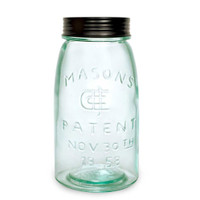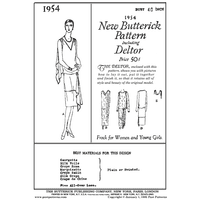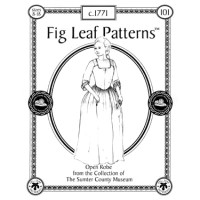 Loading... Please wait...
Loading... Please wait...Categories
Add to Wish List
New Products
- Home
- Historic Patterns
- By Era
- 18th Century
- Women's
- Open Robe c. 1771
Product Description
The original open robe gown that this pattern is derived from was worn by Mrs. Elizabeth Allen Deas (1742-1802). Born in 1742 as the only child of William and Mary Keating Allen, Elizabeth grew up on a plantation in the greater Charleston, South Carolina area. She married John Deas in 1759. They had eleven children, ten boys and one girl. During the years from 1769 to 1771, the Deas family traveled to Europe and England. This dress may be of British origin. Elizabeth died in 1802 and is buried near Charleston, South Carolina.
The gown is hand sewn of lightweight ivory-striped lustring or figured silk. The bodice and sleeves are lined with linen. The bodice is closely fitted and was originally stiffened with two whalebone stays set at center back. A regular pattern of pin holes along the center front edges suggests that the dress originally was pinned or stitched closed. The separately cut skirt is set into the bodice with half inch box pleats. The sleeves are three-quarter length with a vertical dart at the back of the elbow and a horizontal dart on the front of the sleeve at the crook of the arm. The sleeves are finished at the elbow with box-pleated self-trims.
The original petticoat for this ensemble does not survive. A petticoat pattern based on garments described in Nancy Bradfield's Costume in Detail and Norah Waugh's The Cut of Women's Clothes is included.










